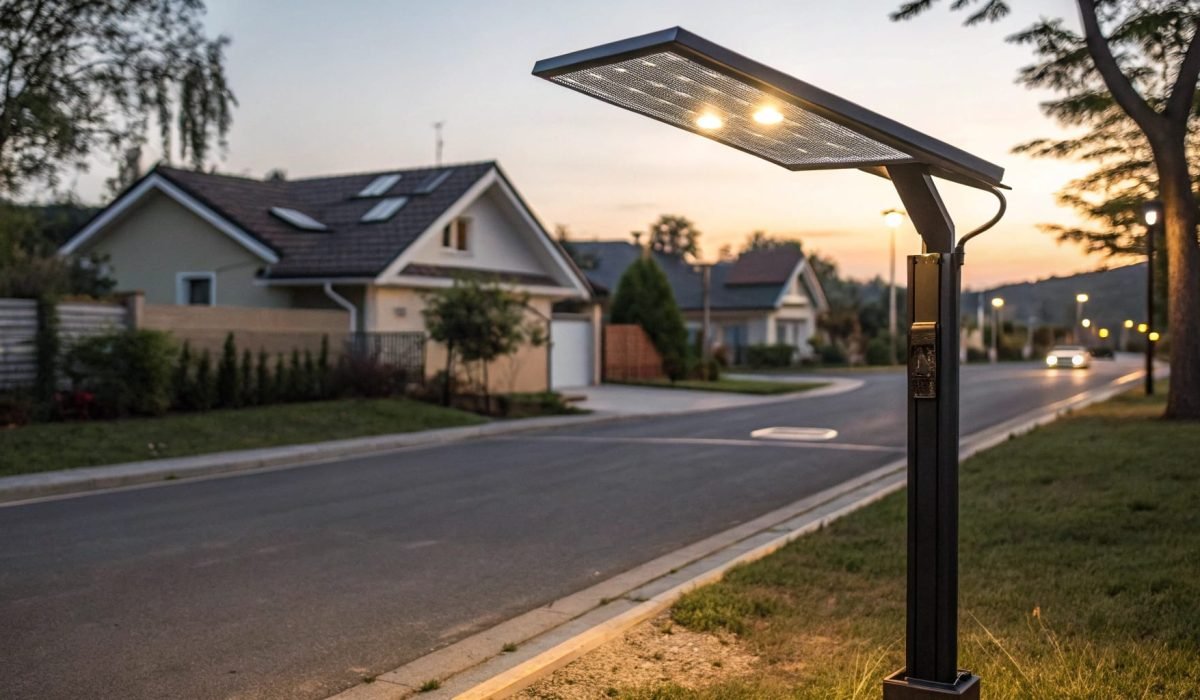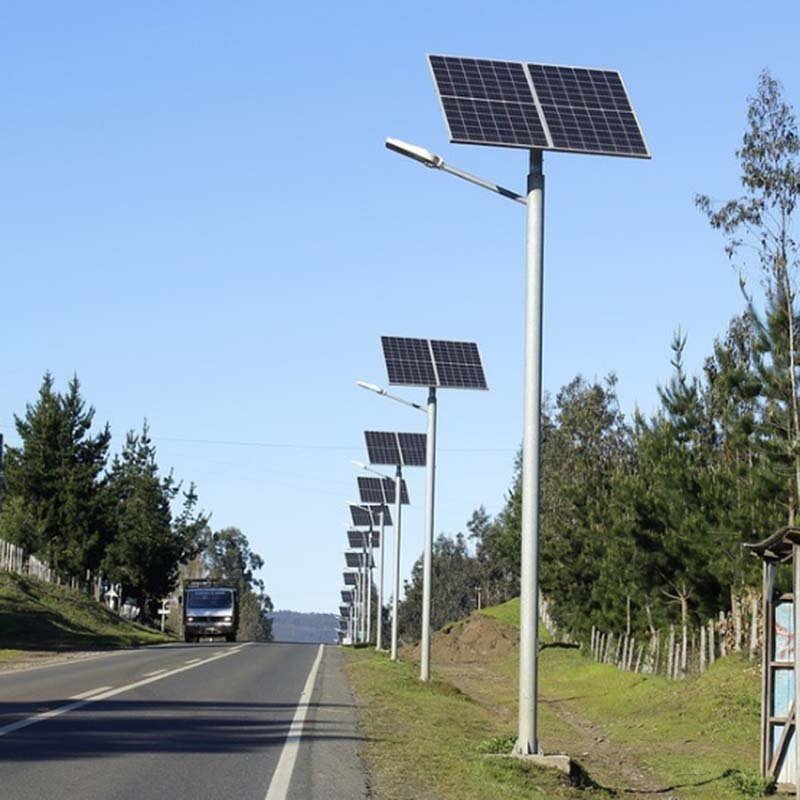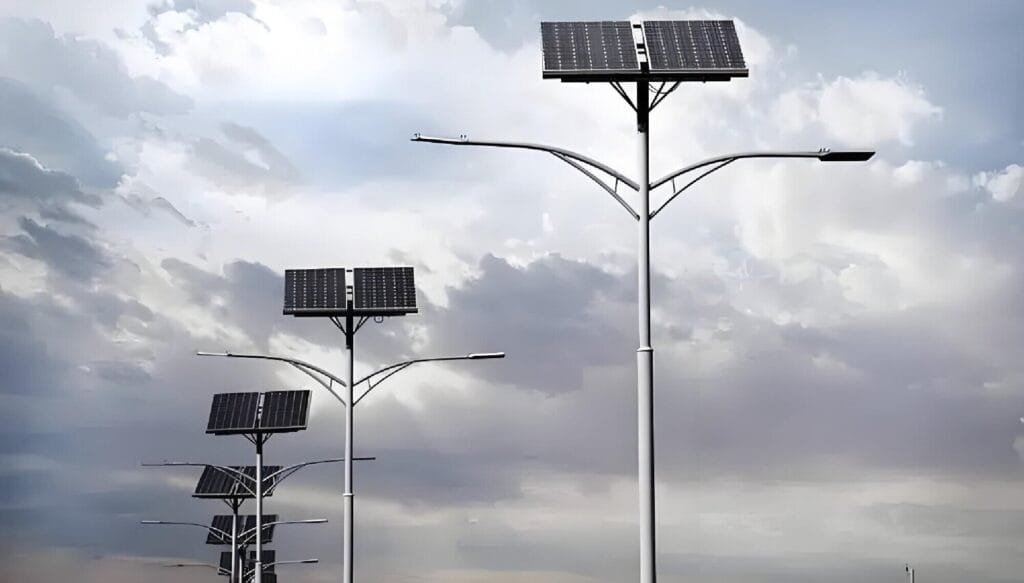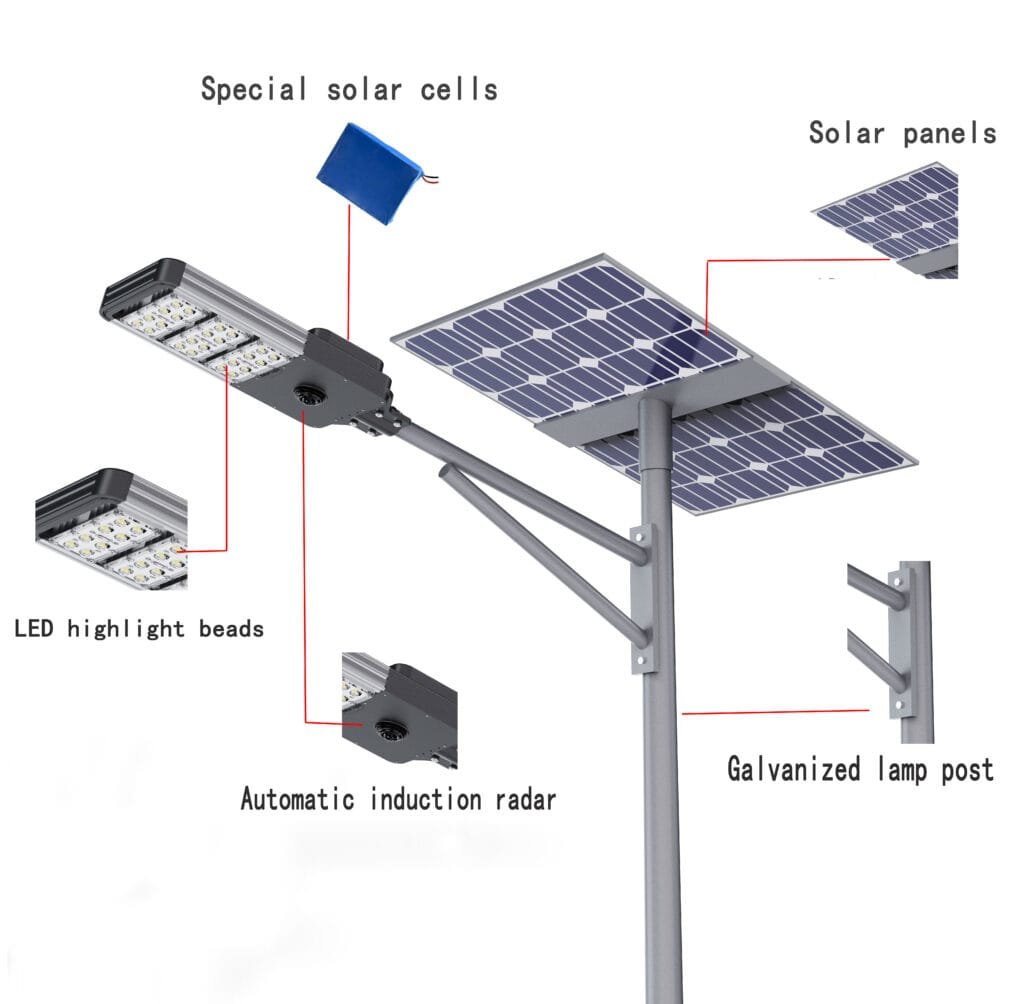Outdoor lighting plays a crucial role in safety, visibility, and energy efficiency. Choosing the wrong lighting solution can lead to wasted investments, poor performance, or maintenance headaches. If you’re struggling to find a reliable option for your project, you’re not alone.
The ideal solar-powered street lamp should combine efficiency, long lifespan, and durability. A well-designed LED solar light, with features like high brightness and smart energy management, is your best choice for consistent performance and lower costs.
Let’s explore how to pinpoint the right product for your needs, avoid common pitfalls, and achieve long-term results.
How Do I Choose the Best Solar Street Light?
Purchasing solar-powered lighting without understanding the key selection criteria can result in underperforming systems or wasted budgets. Are you wondering which type of light will work best for your road, parking lot, or community project?
The best solution depends on analyzing site requirements, illumination levels, and environmental challenges. Look for systems with efficient batteries, weatherproof designs, and optimal light distribution.
Dive Deeper: Simplifying the Decision Process
1. Define the Application
The first step is understanding where the light will be used:
- Residential streets need moderate brightness.
- Highways demand powerful, wide-angle illumination.
- Gardens or walkways require softer lighting with aesthetic appeal.
2. Key Features to Look For
| Feature | Why It Matters |
|---|---|
| Battery Capacity | Longer runtime ensures overnight lighting. |
| Solar Panel Quality | Efficient panels charge faster, even in cloudy weather. |
| Durability | Sturdy materials resist wear and tear. |
3. Avoid Costly Mistakes
- Buying cheap, low-quality options can lead to frequent replacements.
- Ignoring operating temperature ranges may result in lights failing in extreme climates.
Pro Tip: Choose reputable manufacturers who provide guarantees and certifications.
What is the Strongest Solar Outdoor Light?
Is your current lighting struggling to meet the demands of large areas or harsh conditions? Weak illumination can compromise safety and functionality, especially in high-traffic or commercial areas.
The strongest solar-powered light combines high brightness (measured in lumens), a robust design, and efficient energy storage. Look for LED technology with a minimum output of 15,000 lumens for large-scale projects.
Dive Deeper: Identifying High-Performance Options
Brightness for Specific Applications
- Roadways: Lights should be powerful enough to illuminate wide lanes clearly.
- Parking Lots: Bright, even coverage helps improve visibility for drivers.
Batteries That Keep the Lights On
Powerful batteries are the backbone of strong outdoor lighting. Lithium-ion and lithium phosphate batteries offer superior lifespan and reliability compared to traditional options.
| Battery Type | Advantages |
|---|---|
| Lithium-ion | Lightweight, fast charging, long life. |
| Lithium phosphate | More cycles, safer, environmentally friendly. |
Robust Materials for Outdoor Durability
A high-quality light should survive rain, dust, and temperature swings. Look for models rated IP66 or higher for protection against environmental challenges.
How Many Lumens Do You Need for a Street Light?
Many projects fail due to either under-lighting or over-lighting. Both situations can cause safety risks or wasted energy. Determining the right brightness isn’t as simple as picking the brightest option—it depends on your specific setup.
Street lighting brightness varies based on pole height, road type, and area coverage. For most residential streets, 5,000–7,000 lumens are ideal. Commercial roads may require over 15,000 lumens for proper visibility.
Dive Deeper: Balancing Illumination and Efficiency
Matching Lumens to the Environment
- Low-Traffic Areas: Use moderate lighting to save energy while maintaining safety.
- High-Traffic Zones: Choose higher lumens for better visibility and reduced accidents.
Optimizing Pole Height and Light Distribution
Higher poles demand brighter fixtures for adequate ground coverage. Ensure your light’s beam angle matches the road width to avoid wasted light or dark spots.
| Pole Height | Recommended Lumens |
|---|---|
| 3–6 meters | 3,000–6,000 lumens (garden/walkways). |
| 8–12 meters | 6,000–15,000 lumens (streets/roads). |
| Over 12 meters | 15,000+ lumens (highways). |
Which Street Lights Are Best?
Are you unsure which lighting system is worth your investment? With so many options, choosing the wrong type can lead to underwhelming results, high maintenance costs, and dissatisfied stakeholders.
Modern LED-based solar solutions outperform traditional systems. They use less energy, last longer, and provide customizable brightness levels to suit any application.
Dive Deeper: Comparing Technologies
Traditional Lighting Options
| Type | Advantages | Drawbacks |
|---|---|---|
| High-Pressure Sodium (HPS) | Affordable, long lifespan | Poor color rendering, high heat. |
| Mercury Vapor | Bright, durable | Emits harmful UV radiation. |
| Incandescent | Inexpensive upfront | Inefficient, short lifespan. |
Why LED Solar Lights Dominate
- Efficiency: LEDs convert 90% of energy into light, wasting less heat.
- Lifespan: Most LEDs last 50,000+ hours, reducing replacement cycles.
- Eco-Friendly: Solar-powered LEDs reduce carbon footprints.
Applications Beyond Roads
These versatile lights are ideal for:
- Tunnels: Uniform brightness for safety in confined spaces.
- Parks and Gardens: Attractive designs with soft lighting.
- Commercial Spaces: Motion-sensing technology for energy savings.
Conclusion
The right lighting system enhances safety, saves energy, and minimizes maintenance costs. By understanding your project’s unique needs—brightness levels, durability, and sustainability—you can select a solar-powered LED solution tailored to your goals.






